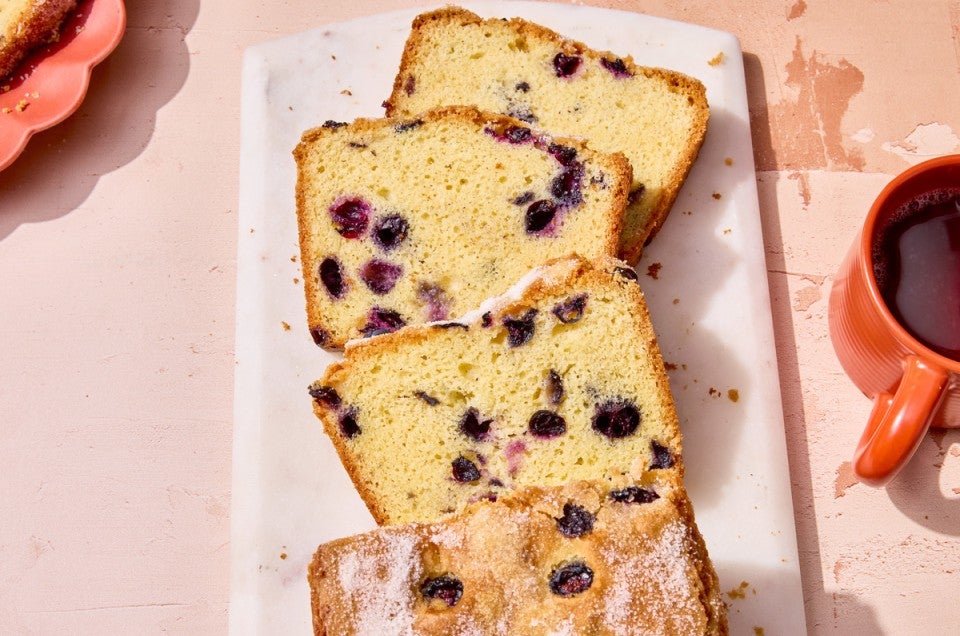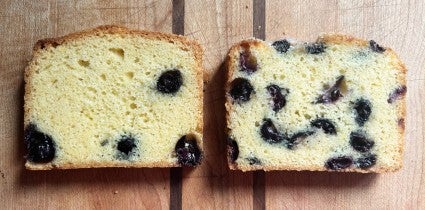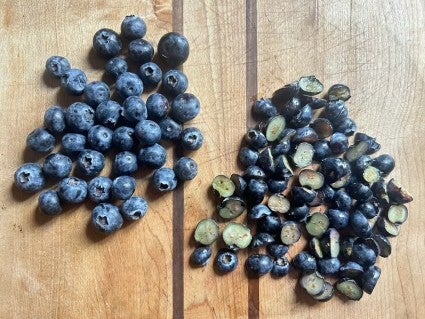Do you know this two-minute trick for better blueberry bakes?
One small step makes all the difference.


With fresh blueberries reaching their peak, it's time to start baking them into muffins, pies, cakes, and more.
And here's a tip to get the most out of every berry: Taking a couple of extra minutes to chop your blueberries (rather than leaving them whole) before adding them to batter can double their impact. Here's why chopped blueberries can lead to better baked goods.
Many blueberries are small enough to be used whole. But King Arthur Test Kitchen director Sarah Jampel likes to explore every step of a recipe in detail. After reading a tip in author Sarah Kieffer’s 100 Afternoon Sweets that calls for larger berries to be chopped into bite-sized pieces, Jampel tried just that while developing a new recipe for Easy Blueberry Muffin Cake. And she loved the result.

Jampel noted that chopping blueberries effectively doubled their presence in the cake. Rather than an uneven scatter of large whole berries, the chopped berries were more widely and evenly distributed, leading to cake with more blueberry flavor in each bite (as well as a more attractive appearance). Sarah also noted that the smaller berry pieces helped prevent the “gloopy” pockets of berry you can sometimes get when using large whole berries.
In addition, the smaller berry pieces were less likely to sink to the bottom of the cake, a common problem when adding berries or other solid ingredients to cake, muffin, or quick bread batter. This tip proved so successful that Sarah incorporated it into another new recipe, Blueberry Bread.
Sarah emphasizes that chopping berries is only necessary when they’re fairly large, say, bigger than standard peas. The fresh wild blueberries you can get in season are usually so small that they can be left whole.

You might think that cutting blueberries releases their juices and will thus lead to them bleeding (leaking) as they bake, staining the batter a deep purple hue. Not so. Since fresh blueberries are actually fairly dry, especially compared to other berries like strawberries or raspberries, bleeding isn’t a problem.
One exception: Packaged frozen berries from the supermarket, which can bleed even when left whole. If you’re planning to chop large frozen blueberries, they should be rinsed first to prevent bleeding; read The secret to baking with frozen blueberries for details. Note that rinsing isn’t necessary for fresh berries that you’ve frozen yourself; they can be chopped straight from the freezer without rinsing.
Sarah says, “I just roughly chop the berries, aiming to cut any large berries in half. Any gargantuan berries (the ones that are dime-sized!) should probably be quartered. But I’m not exact about any of it.”

A sharp chef’s knife is a good chopping tool. But if your knife isn’t particularly sharp (or if you fear cutting yourself), try using a pair of small kitchen shears or regular desktop scissors, whichever you find more comfortable. Through my own testing, I discovered that I could halve blueberries 40 percent more quickly with a pair of scissors than with a knife.
Any berry larger than about 1/2" in diameter is a candidate for chopping. Strawberries should be hulled, then chopped into 1/2" pieces. Hulled blackberries do best when cut top to bottom (then crosswise if they're particularly large); this minimizes their bleeding. Delicate raspberries should be cut only once, top to bottom, rather than around the equator. And finally, sturdy cranberries can be chopped however you like; they won’t bleed no matter how you treat them!
Did you buy blueberries on sale (or pick multiple quarts), and now you find yourself with too many berries to handle? See what to do with too much fruit.
Cover photo (Blueberry Bread) by Patrick Marinello; food styling by Yekaterina Boytsova.


